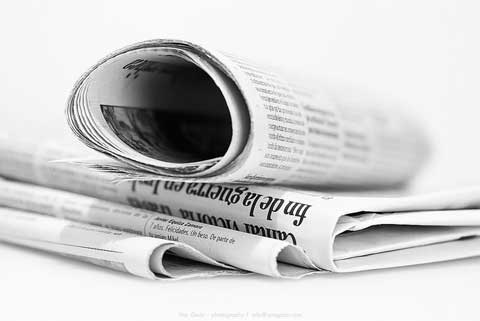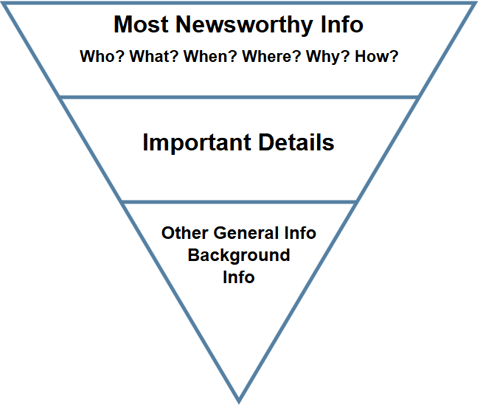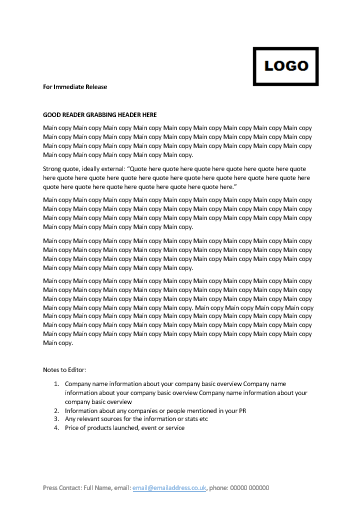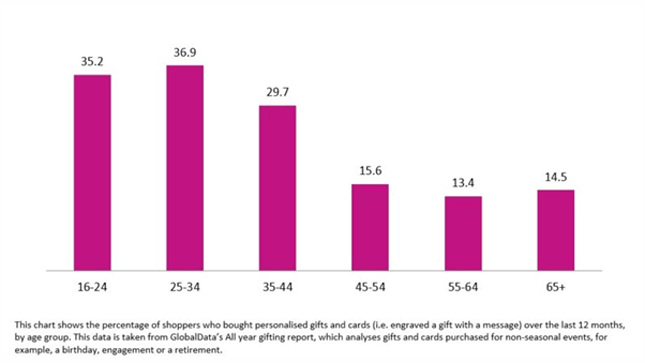Anyone responsible for the marketing in their company should come across this beauty of a task; writing a press release (PR). Whether you think it sounds easy, find the prospect daunting or think you already have it in the bag – this guide will provide you with some top tips to enhance your press release skills. In addition, I will follow this with some further tips next month with the blog post ‘Press Release 101: How to Get a Press Release Published’, which will help you increase your publication success rate. For now, let’s start with the basics…
Why Write a Press Release?

Raising awareness of your brand, promoting your products, service or events and gaining a reputation as an authority in your industry should be your primary objective when producing a press release (PR). If you get it right, PR can be an excellent free method of advertising and when placed in high-authority publications – it will help raise your profile. Better yet, investors keep up with the news too. So well-placed PR could potentially lead to more growth for your business.
Understanding the Journalist
When you put your marketing strategy together for your product or service you thought about your audience, your customer. When writing a press release think about the journalist or publication you are going to send it to. If you want to get your PR published you need to build strong relationships with local and national press and understand what is important to them; how does it benefit their career and their respective website / newspaper / magazine? Most journalists or bloggers are passionate about their writing. They are either underpaid or writing on a volunteer basis, so they really are doing it for the love. They enjoy sharing valid, newsworthy information that will benefit their readers and they are flooded with self-promoting PR from companies that simply want the free coverage, which isn’t very inspiring. Take a look through your latest press release and be honest. How much of it is just promoting your company and how much actually has a valid newsworthy angle for the target publication or, more importantly, your customer?
Promotional vs Newsworthy
A good rule of thumb is to aim for 30% of your PR as promotional and 70% newsworthy and if you include a quote, which is recommended in paragraph two, make it non-promotional and from an external valid source if possible. Journalists and readers alike love a good quote!
Inverted Pyramid
This is a traditional method still used widely by journalists and therefore it is a great idea to follow it if you want to increase your chances of getting published.
The inverted pyramid approach addresses the most important questions at the top of the story, hypothesises and then provides supporting material. Simply put, make sure the most important information (to the reader or journalist) is at the top and less important towards the end.

Finding an Inspiring Angle
As discussed earlier, you need to make sure that your press release is not just promotional and benefits the reader of your target publication i.e. your target audience or customer. What do they want to read about? Here are a few good reasons for a press release that may help you generate more newsworthy angles for your PR:
1. Charity Fundraising
Any level of charity involvement will make your press release newsworthy. Whether you have planned an internal charity effort to climb a mountain, a corporate event or can offer proceeds of a particular product to a chosen charity. Find a charity that works well within the context of your specific product or service that can work closely with you. The charity will support your PR efforts and help you to get them published, which leads to a ‘win win’ for both parties.
2. Awards
Keep an eye out for any industry related awards that you could enter. Anything from your environmental impact, staff development, top quality products and best digital magazine or eCommerce website can be potential areas that are worthy of awards. The award provider will include you in their press release and you can add ‘award winning’ to your website copy. A great excuse for some PR that can also act as a launch pad for your latest product, service or event.
3. Unique Product
If you have a product or service never heard or seen before then this is news! However, make sure you have done the research to back up the fact that it is unique and reveal these findings early within your PR. You can also add authority from an external source here with a good quote supporting the launch. New is good!
4. Celebrity Endorsements
If you can get a celebrity to endorse your product with a free sample or talk about your company then you have found PR gold dust. Equally, if the paps catch a shot of a celebrity with your product or you notice they are using it on television then leap on the opportunity with some follow up PR. A great example of this was one of our clients Gopak, who spotted one of their folding tables in the Dizzee Rascle Dirtee Disco video in 2010 and they have since referenced the appearance in their news feed.
Press Release Word Template
Making your press release easy to read and utilise for a journalist is important. By following the traditional and widely accepted format, you are more likely to get published. The most important elements to a traditional press release word template should:
- Start with ‘For Immediate Release’ – Some press releases are sent in pre-empt of a launch so if you want it out ASAP it is important that you state ‘For immediate release’ at the top of your template.
- Include a Reader Grabbing Header (in CAPS). The header needs to communicate the piece fast and have a newsworthy quality for the target publication.
- Have an Image and Your Company Logo – you don’t actually need to embed the image in the word document. The journalist will want to easily copy the text and any embedded images may get in the way. The only visuals needed within the word template are your company branding, i.e header / footer design of the word doc but avoid having images wrapped within the text.
- Ideally Include a 2nd Para Quote – try and include a quote when you can but make sure it is valid and ideally from an external source with non-promotional context where possible.
- Include Any Sources – only hyperlink keywords or sources for online publications. For any print journalists the hyperlinks will get in the way and are unnecessary, so you will need to include sources as a footnote in your notes to the editor.
- Be Concise on One Page – Try and keep your press release to 600 words max, 300 words minimum. 11pt text and single or 1.5 spacing is fine for PR so this can be a way of helping you reduce the length, along with avoiding embedded images. If you have a lot more information you want to provide then link to this in your notes to the editor.
- Notes to the Editor – Any additional information should be at the end of your PR labelled ‘Notes to the Editor’ with numbered points. As a standard include more about your company and any others mentioned. If you are promoting a new product this is where you can include the pricing and also where you can include sources to any information or stats.
- Press Contact – Include the name, email and phone number of the press contact in the footer of your word document.
Here is an example template, please click the image if you would like to download a free copy:

Until Next Time!
I hope these tips will help inspire you to write some great PR. Don’t forget to read next month’s follow up blog post ‘Press Release 101: How to Get a Press Release Published’, which will offer further tips on how to submit your press release and get published.
Please feel free to comment or ask questions on twitter @ThoughtShiftUK #PRTips. You can also follow my contributions or sign up to the ThoughtShift Guest List, our monthly email, to keep up-to-date on all our blog posts, guides and events.






